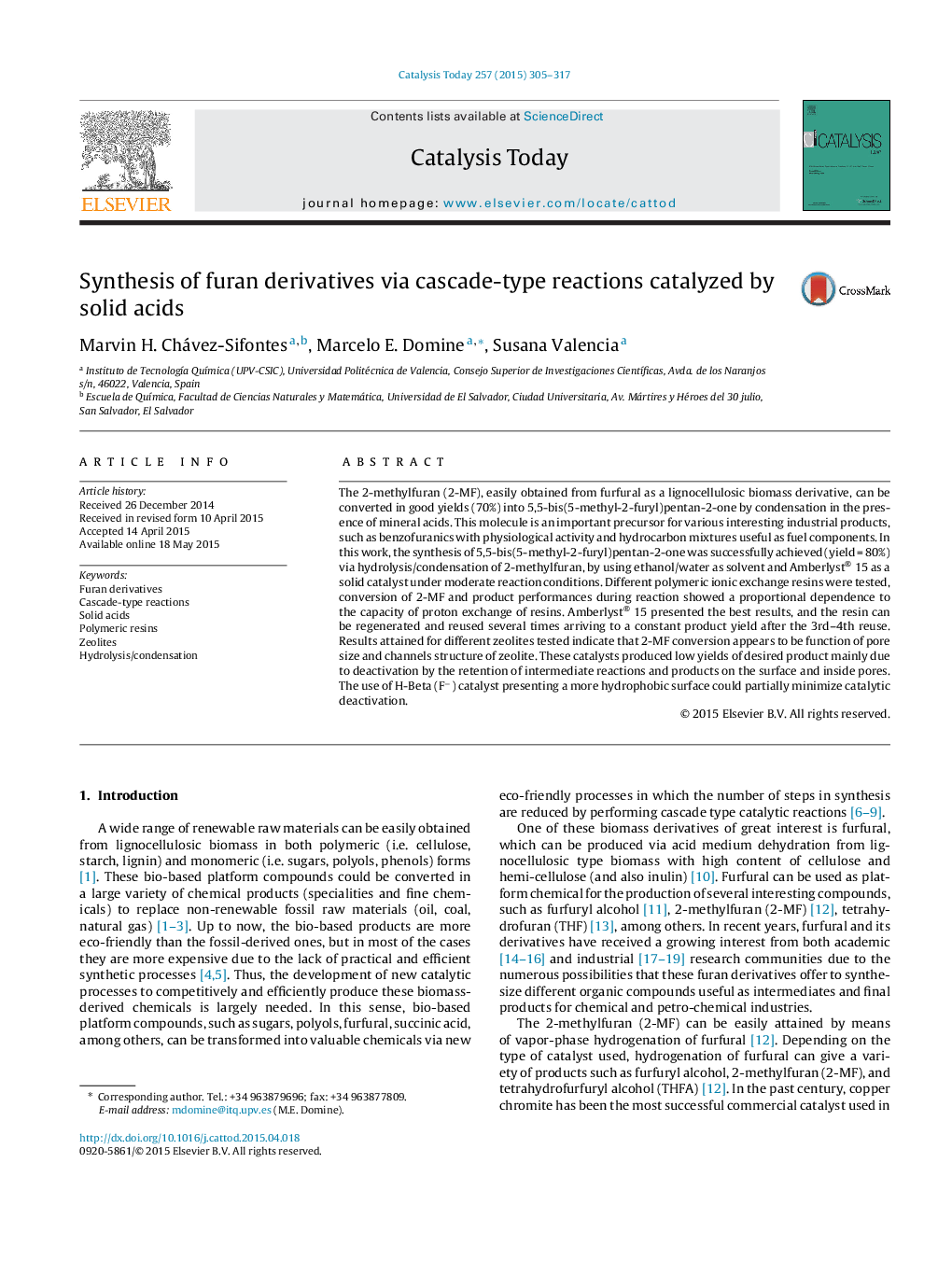| کد مقاله | کد نشریه | سال انتشار | مقاله انگلیسی | نسخه تمام متن |
|---|---|---|---|---|
| 53478 | 46971 | 2015 | 13 صفحه PDF | دانلود رایگان |
• The 5,5-bis(5-methyl-2-furyl)pentan-2-one was efficiently synthesized (80% yield).
• Best results were attained with Amberlyst® 15 as catalyst.
• The resin can be reused several times arriving to a constant yield after 4th reuse.
• Zeolite catalysts produced low yields of desired product mainly due to deactivation.
• Complete reaction mechanism and kinetic model (pseudo first order) are proposed.
The 2-methylfuran (2-MF), easily obtained from furfural as a lignocellulosic biomass derivative, can be converted in good yields (70%) into 5,5-bis(5-methyl-2-furyl)pentan-2-one by condensation in the presence of mineral acids. This molecule is an important precursor for various interesting industrial products, such as benzofuranics with physiological activity and hydrocarbon mixtures useful as fuel components. In this work, the synthesis of 5,5-bis(5-methyl-2-furyl)pentan-2-one was successfully achieved (yield = 80%) via hydrolysis/condensation of 2-methylfuran, by using ethanol/water as solvent and Amberlyst® 15 as a solid catalyst under moderate reaction conditions. Different polymeric ionic exchange resins were tested, conversion of 2-MF and product performances during reaction showed a proportional dependence to the capacity of proton exchange of resins. Amberlyst® 15 presented the best results, and the resin can be regenerated and reused several times arriving to a constant product yield after the 3rd–4th reuse. Results attained for different zeolites tested indicate that 2-MF conversion appears to be function of pore size and channels structure of zeolite. These catalysts produced low yields of desired product mainly due to deactivation by the retention of intermediate reactions and products on the surface and inside pores. The use of H-Beta (F−) catalyst presenting a more hydrophobic surface could partially minimize catalytic deactivation.
Figure optionsDownload high-quality image (143 K)Download as PowerPoint slide
Journal: Catalysis Today - Volume 257, Part 2, 15 November 2015, Pages 305–317
